 |
by Emma Roth on (#6Z8AC)
The Trump administration has ordered Nvidia and AMD to pay the federal government a 15 percent cut of their AI chip sales revenue to China, according to reports from The New York Times and The Financial Times. Nvidia CEO Jensen Huang reportedly reached an agreement with President Donald Trump just days before the Commerce Department [...]
|
The Verge
| Link | https://www.theverge.com/ |
| Feed | http://www.theverge.com/rss/index.xml |
| Updated | 2025-12-25 04:47 |
 |
by Brandt Ranj on (#6Z8AD)
Ninja's Swirl ups the ante for ice cream machines by also allowing you to make soft serve or frozen yogurt at home. It normally costs $349.99, but now you can pick one up for $299.99 at Amazon, its lowest price to date. It's the first time the ice cream maker has gone on sale since [...]
|
 |
by Andrew J. Hawkins on (#6Z8AE)
Ford says its finally cracked the code on cheap EVs. The automaker announced plans to build a family" of low-cost electric vehicles at its Kentucky assembly plant, starting with a four-door, midsized $30,000 pickup truck in 2027. Ford touted the announcement as its Model T moment" that will be more streamlined to help bring down [...]
|
 |
by Jess Weatherbed on (#6Z8AF)
A new website that lets you paint over a world map with other users in real-time has taken the digital illustration community by storm. Wplace is a collaborative pixel art platform that serves as a spiritual successor to Reddit's r/Place April Fools' Day experiments, placing time restrictions on drawing tools that motivate users to team [...]
|
 |
by Casey Newton on (#6Z8AG)
Hello, and welcome to Decoder! This is Casey Newton, founder and editor of Platformer and cohost of the Hard Fork podcast. This is the second episode of my productivity-focused Decoder series that I'm doing while Nilay is out on parental leave. Today, I'm talking with Notion cofounder and CEO Ivan Zhao. I've followed Notion for [...]
|
 |
by Emma Roth on (#6Z87Q)
Paramount has just snapped up the rights to the UFC, joining an industry-wide race to buy up remaining sports streaming rights. The $7.7 billion deal will bring 30 of the UFC's Fight Nights" and 13 marquee events to Paramount Plus subscribers for seven years starting in 2026 - no pay-per-view required. Paramount, which merged with [...]
|
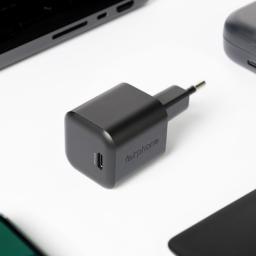 |
by Dominic Preston on (#6Z87R)
Repairable phone manufacturer Fairphone has announced a new range of USB cables and chargers. While they're not user-repairable, the company says that they're more durable and sustainably manufactured than its previous peripherals. And even for people without a Fairphone device, they should make for a more affordable entry point to its more ethical take on [...]
|
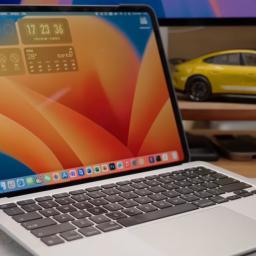 |
by Andrew Liszewski on (#6Z87S)
Apple has little interest in merging iPadOS and macOS, or bringing its desktop operating system to its touchscreen tablet. So a Chinese modder took it upon themselves to create a hybrid laptop they're calling the iPadBook featuring both operating systems in a single device that lets you switch from macOS to iPadOS by simply detaching [...]
|
 |
by Jennifer Pattison Tuohy on (#6Z87T)
For Matter, this year was never going to be about flashy new features. Other than support for security cameras, which I hear should finally arrive this fall, 2025 is all about fixing problems. And with Matter 1.4.2, announced today, the smart home standard is taking an encouraging step forward. Back in January, Tobin Richardson, president [...]
|
 |
by Tom Warren on (#6Z87V)
Hyundai is now offering an optional" security upgrade for the Ioniq 5 in the UK that prevents the car being stolen with a Game Boy-like device. Hyundai wants some Ioniq 5 owners to pay 49 ($65) to upgrade hardware and software components to prevent thieves using handheld devices to unlock and start cars without needing [...]
|
 |
by Thomas Ricker on (#6Z81Z)
AOL dial-up is ending on September 30th according to astatementposted on the company's website. It marks the end of the service that was synonymous with the internet for many since its launch in 1991. AOL routinely evaluates its products and services and has decided to discontinue Dial-up Internet," reads the statement by the Yahoo-owned company. [...]
|
 |
by Barbara Krasnoff on (#6Z7R0)
Passwords still seem to be the most popular method of ensuring that the right person is using the right app or service, despite the slow adoption of passkeys, which are considered more secure. And because we should be using different ones for each device and/or app, the best way to track all of them is [...]
|
 |
by Victoria Song on (#6Z7QZ)
Tech companies keep telling everyone that this or that AI feature is going to change everything. But when you press them for examples, real, concrete examples of how those AI tools should be used, the answers tend to be lackluster. Sometimes AI tools feel so open-ended, it's hard to know where to start or what [...]
|
 |
by Andrew J. Hawkins on (#6Z7PP)
How it started When I was growing up in the Midwest, everyone I knew drove small cars. My dad had a light pink Volvo 240, my mom drove a Dodge Dart, and my grandmother had a 1988 Honda Accord - which would eventually become my first car. We lived in the suburbs, so almost no [...]
|
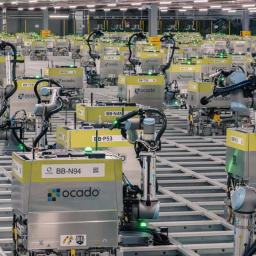 |
by Dominic Preston on (#6Z7PQ)
It's the lack of noise you notice first. There's no clatter of equipment, rumble of engines, or chatter of coworkers. Only the low hum of electronics. For an industrial space, this is eerily quiet, but it makes sense in a building where robots might outnumber people. I'm at a warehouse - or customer fulfilment center [...]
|
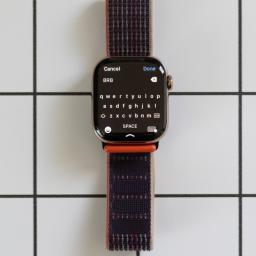 |
by Allison Johnson on (#6Z7N5)
Leaving the house without my phone is the stuff of nightmares. Leaving the house without my phone on purpose? Are you kidding? What if I need to take a picture of something? What will I look at if I need to wait in line? What if disaster strikes or a War of the Worlds happens? [...]
|
 |
by Adi Robertson on (#6Z7N6)
In the fascinating new reality of the internet, teen girls can't learn about periods on Reddit and indie artists can't sell smutty games on Itch.io, but a military contractor will make you nonconsensual deepfakes of Taylor Swift taking her top off for $30 a month. Early Tuesday, Elon Musk's xAI launched a new image and [...]
|
 |
by Jay Peters on (#6Z7N7)
Hi, friends! Welcome to Installer No. 93, your guide to the best and Verge-iest stuff in the world. (If you're new here, welcome, I'm sad the sun is setting sooner, and also you can read all the old editions at the Installer homepage.) This week, I'm reading about the rise of GEO, laughing at Kirby's [...]
|
 |
by Victoria Song on (#6Z79V)
I keep hearing the same sentence repeating in my head. "My vision is that every American is wearing a wearable within four years." RFK Jr., our current secretary of the Department of Health and Human Services, said this at a congressional hearing at the end of June. Wearables, he said, are key to the MAHA [...]
|
 |
by Sheena Vasani on (#6Z79W)
Returning to work or school from summer vacation is never easy, but the Aura Aspen could help you hold onto your favorite memories by putting them front and center. And right now, you can pick up the digital photo frame for around $199 ($30 off) from Amazon, Best Buy, and Aura, which is a new [...]
|
 |
by Jay Peters on (#6Z79Z)
Creating seating arrangements can be pretty stressful; the empath part of me strives to find the perfect seat for every person even if it's a nearly impossible task. If it's for a big, meaningful event, I get even more anxious. When you find the right place for everyone, though, it's even more satisfying than a [...]
|
 |
by Jennifer Pattison Tuohy on (#6Z79Y)
I recently returned from a family camping trip to Cades Cove in the Great Smoky Mountains National Park. I live in South Carolina, so in mid-July, a trip to the mountains is usually an excellent way to seek out cooler temperatures. Not this year. Thanks to this summer's heat dome, I was facing a week [...]
|
 |
by Justine Calma on (#6Z79X)
Now that we're about halfway into the first year of President Donald Trump's second term, we can take stock of his administration's destruction of online environmental resources. It's worse than last time. It's also, seemingly, just the beginning - paving the way forward for the president's polluting agenda. A watchdog group that monitors publicly-available environmental [...]
|
 |
by Ash Parrish on (#6Z78W)
In the aftermath of itch.io pulling the sale of over 20,000 pages of adult content, the creators of that work are left feeling betrayed, exhausted, and fearful. The number of platforms that permit the sale of adult material is shrinking, and there's no guarantee the ones that remain will still permit it in the future. [...]
|
 |
by Emma Roth on (#6Z6ZZ)
OpenAI is bringing back GPT-4o in ChatGPT just one day after replacing it with GPT-5. In a post on X, OpenAI CEO Sam Altman confirmed that the company will let paid users switch to GPT-4o after ChatGPT users mourned its replacement. We will let Plus users choose to continue to use 4o," Altman says. We [...]
|
 |
by Sean Hollister on (#6Z6XE)
I kid you not, we wrote these words in 2014: Microsoft has tried to dumb down its Control Panel with a simple UI over the years, rather than a list of options, but there's still a number of settings that don't exist in the new PC Settings app. Why do I have to go the [...]
|
 |
by Emma Roth on (#6Z6XF)
With the rise of AI writing tools, Wikipedia editors have had to deal with an onslaught of AI-generated content filled with false information and phony citations. Already, the community of Wikipedia volunteers has mobilized to fight back against AI slop, something Wikimedia Foundation product director Marshall Miller likens to a sort of "immune system" response. [...]
|
 |
by Andrew Liszewski on (#6Z6TV)
Ikea has announced that it's opening mini retail experiences in a handful of Best Buy stores in the southern US later this year. It's the first time Ikea's products and services will be available through another US retailer, saving shoppers from having to visit and navigate the chain's warehouse-sized stores which aren't as plentiful in [...]
|
 |
by Richard Lawler on (#6Z6TW)
It's only been a couple of days since the Instagram Map launched, and from the looks of our social feeds, people are not happy about it. Responses have ranged from being mildly annoyed that Instagram is ripping off Snapchat's Snap Maps instead of offering a default feed that only contains your friends' posts, to high [...]
|
 |
by Jay Peters on (#6Z6R0)
OpenAI just announced its GPT-5 AI model on Thursday, but you won't be able to use it with Apple Intelligence's ChatGPT integration until iOS 26, iPadOS 26, and macOS Tahoe 26, Apple confirmed to 9to5Mac. Apple Intelligence can rely on ChatGPT for things like helping answer certain Siri queries or alongside Apple's Google Lens-like Visual [...]
|
 |
by Brandt Ranj on (#6Z6R1)
Having a solid set of Wi-Fi routers is essential, whether you're working from home, playing online games , or streaming a movie. I've used this three-pack of TP-Link's Deco BE26 Wi-Fi 7 Mesh Routers for months without any issues, and I'm eager to recommend them, especially since it's currently on sale for $188.89 ($90 off) [...]
|
 |
by Cameron Faulkner on (#6Z6R2)
As far as I'm concerned, 8BitDo's Pro 3 is the ultimate controller. You may already know that it makes a model literally called the Ultimate controller, but it plays second fiddle to the new Pro 3 in some key ways. It's highly customizable, allowing you to change the face buttons, joystick caps, and more. Let [...]
|
 |
by Andrew Liszewski on (#6Z6R3)
Nintendo has announced a new free mobile app coming to iOS, Android and the Switch. It's called Hello, Mario! and was revealed alongside a new collection of Mario-themed products designed for kids and toddlers launching in Japan later this month. All of Nintendo's mobile apps have been free to download so far, but while some [...]
|
 |
by Andrew J. Hawkins on (#6Z6R4)
On Thursday, Bloomberg reported that Tesla CEO Elon Musk has ordered its Dojo supercomputer project to be disbanded after the project's leader and most of its employees left to join another AI project. The news marked a major setback to the automaker's efforts to develop its own in-house developed supercomputer to train AI models for [...]
|
 |
by Emma Roth on (#6Z6N5)
Google's apparent quest to bring AI features across all of its apps has just extended to one of its most mundane: Google Finance. The company announced on Friday that it's testing a new, AI-powered Google Finance," chatbot included. The revamp, which will roll out in the US in the coming weeks, will let you ask [...]
|
 |
by Andrew Liszewski on (#6Z6N6)
Released as part of a new collection of smartphone, tablet, and earbud cases celebrating the Mauritshuis museum collection in The Hague, Netherlands, Casetify's new AirPods Max accessory can turn you into a 360-year-old work of art. Made from a silk-like textile," according to Designboom, the headphone cover's fabric has been finished with a pleated design [...]
|
 |
by Tina Nguyen on (#6Z6N7)
For the uninitiated, watching a Jeffrey Epstein truther such as Laura Loomer have such influence over the White House's decisions is nothing short of baffling. ABC News attributes "the ouster of at least 15 individuals from Trump's second administration" to Loomer's influence - partially, at least. For Washington veterans who grew up in quote-unquote normal [...]
|
 |
by Emma Roth on (#6Z6N8)
Tesla is dissolving the team that was developing its Dojo supercomputer, according to Bloomberg. The change, which reportedly includes the departure of Dojo head Peter Bannon, marks a notable shift away from using in-house technology to train the AI models powering Tesla's self-driving features and its Optimus humanoid robot. Tesla CEO Elon Musk first introduced [...]
|
 |
by Marina Galperina on (#6Z6NA)
Marina Galperina is a senior tech editor at The Verge who works with staff writers and freelancers on reports and theme weeks. She recently started a new newsletter called The Stepback, which breaks down one essential story from a writer of the week every Sunday. (From Marina: Please subscribe!") During a recent discussion of Labubus [...]
|
 |
by Jacob Kastrenakes on (#6Z6N9)
Here's the tricky part about assessing an AI system's deception rate: if the system is really good at deceiving you, you might not notice. This week on The Vergecast, Adi Robertson and Alex Heath join me to discuss the launch of GPT-5 and GPT-OSS... and the strange charts we saw along the way. GPT-5 is [...]
|
 |
by Tom Warren on (#6Z6K8)
While Microsoft was busy updating Copilot yesterday with OpenAI's new GPT-5 model, it also quietly launched Copilot 3D. It's a free-to-use feature that can transform a regular 2D image into a 3D model that can then be used in game creation, animation, 3D printing, VR / AR, and much more. Copilot 3D just needs a [...]
|
 |
by Dominic Preston on (#6Z6H7)
CFO Lin Tao mentioned Sony's beleaguered phone brand at the company's recent financial results presentation, calling it a very important business for us," according to CNET Japan. You could have fooled me. Sony's last two Xperia 1 flagships have skipped the US market entirely, and it appears to be pulling back in Europe too. It [...]
|
 |
by Jess Weatherbed on (#6Z6FD)
We might finally see the first iPhone browsers built on top of third-party engines now that Japanese regulators have taken up the issue. Apple's malicious compliance in the EU has so far prevented Chrome, and its Blink engine, for example, from coming to iOS, but recently published guidelines related to Japan's Smartphone Act could change [...]
|
 |
by Alex Heath on (#6Z6CW)
The day before the launch of GPT-5, OpenAI CEO Sam Altman surprised employees with a message in the company's Slack. "As we mentioned a few weeks ago, we have been looking at comp for our technical teams given the movement in the market," wrote Altman, according to a copy of the message that was shared [...]
|
 |
by Jay Peters on (#6Z682)
During its big GPT-5 livestream on Thursday, OpenAI showed off a few charts that made the model seem quite impressive - but if you look closely, some graphs were a little bit off. In one, ironically showing how well GPT-5 does in deception evals across models," the scale is all over the place. For coding [...]
|
 |
by Emma Roth on (#6Z683)
The Browser Company - the makers of the Arc browser - just launched a $20 per month subscription to its new AI-powered web browser, Dia, as reported earlier by TechCrunch. The new Dia Pro subscription comes with unlimited access to the browser's chat feature, which lets you ask questions about the content in your tabs. [...]
|
 |
by Sheena Vasani on (#6Z665)
Laptops are great, but sometimes it's simply just more convenient to use a tablet like the iPad Air. The Air's easier to carry, after all, and still powerful enough to handle everything from streaming to taking notes and reading. And right now, the latest version of the Air is down to a new low price. [...]
|
 |
by Emma Roth on (#6Z666)
GPT-5 has finally arrived. Along with the announcement of the highly anticipated AI model, OpenAI also previewed several updates coming to ChatGPT, ranging from visual changes to improvements to the chatbot's performance. Here's a rundown of all of the changes you can expect to see in ChatGPT. Say goodbye to the model picker With the [...]
|
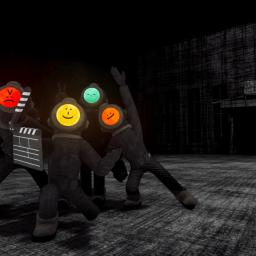 |
by Ash Parrish on (#6Z667)
During today's Nintendo Indie World showcase, I had two epiphanies. The first was the realization that friendslop games are about to hit the Switch 2 like a falling piano in a Road Runner cartoon. The second was that I love that for me, because that means I can finally play them. My friends love "friendslop," [...]
|
 |
by Charles Pulliam-Moore on (#6Z668)
It's official: Skydance Media's deal to purchase CBS parent company Paramount Global for $8 billion is complete, and incoming chairman / CEO David Ellison's first order of business is a massive restructuring. In an open letter about his plans for Paramount, a Skydance Corporation (the merged companies' new name), Ellison announced that, going forward, the [...]
|